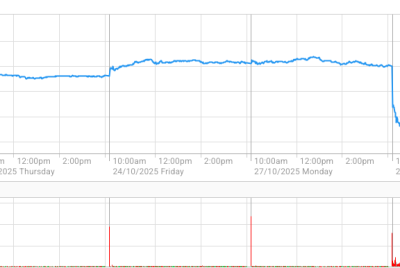Australia's Household Spending Dips 0.1% In September, Hit By Cutbacks In Apparel And Transport

The Australian Bureau of Statistics reported a 0.1% decline in the household spending indicator for September, suggesting that consumer spending remained weak, despite tax cuts and cost-of-living measures that have boosted household incomes since July.
The annual growth declined sharply to 1.3%, down from 2.7%, which was the lowest rate since August 2021, when a new wave of COVID-19 broke out in Australia, Reuters reported.
While households increased their spending on groceries and healthcare, there was a 1.8% decrease in spending on new clothes and shoes, reversing the 0.2% growth reported in August. Fall in transport spending by 0.6% was attributed to lower prices at the petrol pump and reduced spending on new cars.
"Rises in non-discretionary categories such as food and health, which rose by 0.5% and 0.6% respectively, partly offset these falls," ABS head of business statistics Robert Ewing pointed out.
"Clothing and footwear was the largest factor in the monthly fall, with spending down 1.8 per cent in this category," Robert Ewing, ABS head of business statistics
— Australian Bureau of Statistics (@ABSStats) November 1, 2024
For more, see https://t.co/g7skb1V3T6 pic.twitter.com/5jdtY2YrJi
In September, spending on goods like food, cars, healthcare, and travel amounted to AU$69.9 billion, reflecting minimal change since the start of the year. Additionally, the volume of spending was dim, decreasing by 0.4% for the entire September quarter compared to the same period last year.
This decline is troubling given that the population is expanding quickly at a rate of 2.5%, and substantial tax cuts have increased the consumers' disposable income since July.
"The data looks very weak over the last three months and surprisingly soft," Gareth Aird, head of Australian economics at CBA, stated. "If the data is close to accurate there will be no tax-cut induced rebound in consumption in the national accounts for Q3."
The latest figures might force the Reserve Bank of Australia (RBA) to adopt a more cautious approach and retain the interest rates at the upcoming policy meeting next week. RBA had expected an increase in consumption during the second half of this year.
The household spending indicator includes more than double the categories found in the retail trade survey and makes up a large part of the expenditures reflected in the official national accounts.
© Copyright 2025 IBTimes AU. All rights reserved.





















